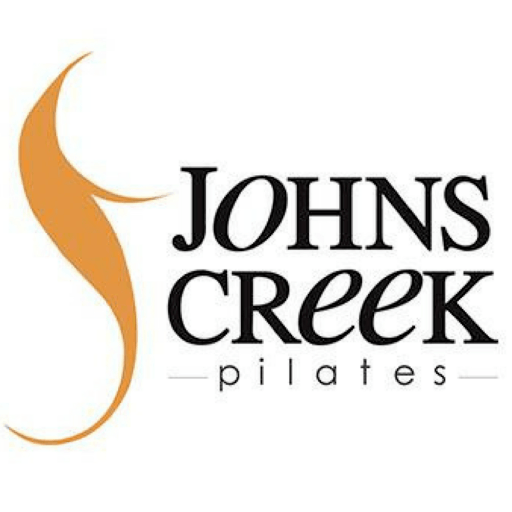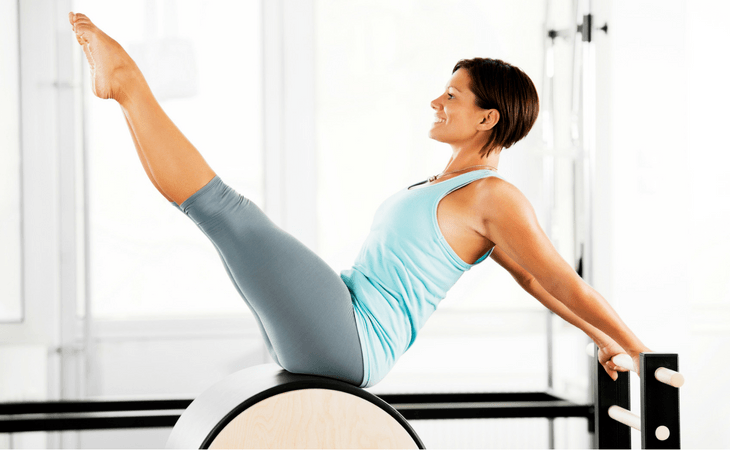The Pilates method has become very popular not only as a way to work out but also a holistic approach to the body. It addresses physical strength, flexibility, posture, and mental awareness.
It was designed by Joseph Pilates, a German physical trainer, during World War I. He brought the method to the U.S. in 1926, with his fitness center in New York.
The success of this method relies on its versatility:
- It can be adapted to people with any fitness background.
- It reduces pain and disability.
- It can be used as a rehabilitation tool.
- It increases the psychological well-being.
The following sections will cover how Pilates works AND the health benefits it provides backed up by research.
How Does Pilates Work?
The main goal of Pilates is fusing the mind and the body to achieve optimal health conditions. To do so, the Pilates method has 6 “essential principles”:
Centering: The method focuses on the center of the body – what Pilates named the “powerhouse”. Each exercise begins by activating the core muscles. The concept is that energy begins at the core and radiates outward to the extremities.
Concentration: The mind guides the body. The greatest value comes from undivided attention and full commitment to each exercise.
Control: The consequence of absolute focus is muscular control. The concentration of the mind allows a better control of each movement.
Breath: Joseph Pilates emphasized the importance of breathing in his exercises – Inhaling and exhaling deeply. Most exercises synchronize with the breath. The purpose is to clean the body through proper breathing.
Precision: The method aims to do the movement properly, not doing as many repetitions as you can. The goal is to keep the body aligned while doing each exercise. This teaches the body how to move correctly.
Flow: Our bodies move by connecting all body parts in a “flowing manner”. That’s why this method doesn’t include static or isolated movements. Each exercise “flows” into the other.
It’s believed that these principles make the Pilates method so versatile and effective.
Exercises can be adapted depending on the goal – e.g. strength training, rehabilitation, or a vigorous workout. They can be performed on a mat or specialized equipment – one example is known as a “Reformer”. The method uses body weight as resistance with 3 to 5 repetitions per exercise.
Benefits of Pilates
Pilates has proven to be an effective rehabilitation tool. Most research shows it provides pain relief and reduces disability for a variety of conditions like:
Chronic low back pain. Pilates provides the same results as a “Back School” program or therapeutic exercise.
The recommendation is that patients with non-specific lower back pain have at least 2 to 3 sessions of Pilates per week. 20 cumulative hours show an important decrease in pain and enhancement of functional abilities.
Scoliosis. Pilates is suggested for patients with scoliosis, whether their treatment is surgical or conservative. This method increases the flexibility of the spine and decreases pain.
It can also enhance the treatment of scoliosis when combined with chiropractic therapy.
Bone health. A single session of Pilates can aid bone development in women with osteopenia.
Multiple sclerosis. It can improve the walking performance and the functional ability of patients with MS.
For older adults. A Pilates program can significantly improve the gait pattern and the postural balance in older adults. This has a positive impact on their quality of life.
Psychological well-being. Pilates also has psychological benefits. It improves the mood, the sleep quality, self-confidence, and can reduce depression.
Final Words on the Benefits of Pilates
This method is beneficial for pain management and the overall body function, regardless of age or physical condition.
However, keep in mind that Pilates is a tool in a rehabilitation context. If you’re experiencing pain or some kind of functional disability, please consult a healthcare professional. He/she is trained to evaluate, diagnose, and treat your symptoms.
If you would like to make an appointment, please contact us now!
References
Di Lorenzo, C. E. (2011). Pilates: What Is It? Should It Be Used in Rehabilitation? Sports Health, 3(4), 352–361. http://doi.org/10.1177/1941738111410285
Kloubec, J. (2011). Pilates: how does it work and who needs it? Muscles, Ligaments and Tendons Journal, 1(2), 61–66. Available at: https://www.ncbi.nlm.nih.gov/pmc/articles/PMC3666467/
Byrnes, Keira et al. (2018) Is Pilates an effective rehabilitation tool? A systematic review. Journal of Bodywork and Movement Therapies, 22 (1, 192-202. Available at: https://www.bodyworkmovementtherapies.com/article/S1360-8592(17)30095-5/fulltext
Wells, C., Kolt, G. S., Marshall, P., Hill, B., & Bialocerkowski, A. (2014). The Effectiveness of Pilates Exercise in People with Chronic Low Back Pain: A Systematic Review. PLoS ONE, 9(7), e100402. http://doi.org/10.1371/journal.pone.0100402
Lin, H.-T., Hung, W.-C., Hung, J.-L., Wu, P.-S., Liaw, L.-J., & Chang, J.-H. (2016). Effects of pilates on patients with chronic non-specific low back pain: a systematic review. Journal of Physical Therapy Science, 28(10), 2961–2969. http://doi.org/10.1589/jpts.28.2961
Alves, A. et al. (2012). The effectiveness of the Pilates method: Reducing the degree of non-structural scoliosis, and improving flexibility and pain in female college students. Journal of Bodywork and Movement Therapies, 16 (2), 191-198. Available at: https://www.bodyworkmovementtherapies.com/article/S1360-8592(11)00067-2/fulltext
Blum, C. Chiropractic and pilates therapy for the treatment of adult scoliosis. Journal of Manipulative & Physiological Therapeutics, 25 (4) , E1 - E8. Available at: https://www.jmptonline.org/article/S0161-4754(02)93254-9/fulltext
Kim, C. S., Kim, J. Y., & Kim, H. J. (2014). The effects of a single bout pilates exercise on mRNA expression of bone metabolic cytokines in osteopenia women. Journal of Exercise Nutrition & Biochemistry, 18(1), 69–78. http://doi.org/10.5717/jenb.2014.18.1.69
Campos de Oliveira, L., Gonçalves de Oliveira, R., & Pires-Oliveira, D. A. de A. (2015). Effects of Pilates on muscle strength, postural balance and quality of life of older adults: a randomized, controlled, clinical trial. Journal of Physical Therapy Science, 27(3), 871–876. http://doi.org/10.1589/jpts.27.871
Duff, W. R. D., Andrushko, J. W., Renshaw, D. W., Chilibeck, P. D., Farthing, J. P., Danielson, J., & Evans, C. D. (2018). Impact of Pilates Exercise in Multiple Sclerosis: A Randomized Controlled Trial. International Journal of MS Care, 20(2), 92–100. http://doi.org/10.7224/1537-2073.2017-066
Roh, S. Y. (2016). Effect of a 16-week Pilates exercise program on the ego resiliency and depression in elderly women. Journal of Exercise Rehabilitation, 12(5), 494–498. http://doi.org/10.12965/jer.1632704.352
Roh, S. Y. (2018). The influence of physical self-perception of female college students participating in Pilates classes on perceived health state and psychological wellbeing. Journal of Exercise Rehabilitation, 14(2), 192–198. http://doi.org/10.12965/jer.1836088.044
